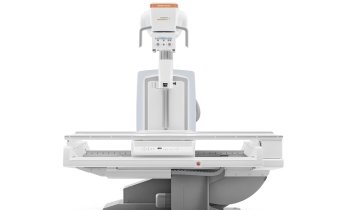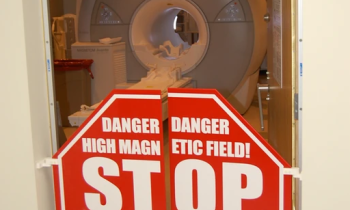Chronic disease
Shared medical appointments offer hope
There is a global shortage of doctors that is getting worse every year. With the demographic shift in many countries from a predominantly young to an increasing aging population, a steep increase in chronic disease is occurring.

This is particularly true in the United States, where approximately 140 million residents have been diagnosed with debilitating chronic medical conditions.
Treatment of chronic diseases is estimated as being 75% of healthcare costs in the U.S. The Centers for Disease Control reports that medical treatment of diabetes alone costs an annual $116 billion to treat 26 million patients. The National Institutes of Health projects that by 2050, up to 20% of the U.S. population will have diabetes. Who is going to take care of these patients? How can the impact of an estimated shortfall by 2025 of 352,000 primary care physicians alone be confronted?
Mobile apps for smartphones and telemedicine offer high-tech solutions to increase access to healthcare information and caregivers. A highly effective low-tech solution is the shared patient appointment. This is a well-established practice for clinical psychology and substance abuse rehabilitation, but it hasn’t been widely adopted. Champions have been promoting the concept for nearly 20 years. Until recently, they’ve been ignored. But this is changing.
Over the past five years, there’s been a steady increase in its use. The American Academy of Family Physicians (AAFP) conducts an annual survey which includes a question about group visit usage by its 110,000+ members. In 2012, 11.8% of survey respondents reported that they offer group visits to patients, more than double the 5.7% who did this in 2005. The organization strongly endorses and promotes the practice as a way to lower costs, improve patient treatment, and reduce workload overload and stress for physicians. It also leverages a physician’s time and helps make them more productive.
Group visits help reduce appointment backlogs and long waits to see a physician. They offer an alternative option of a 60-120 minute visit with one or more medical professionals instead of a one-on-one rushed short visit with a doctor. More information is provided, as well as individual private care as needed. Most patients react positively to fellow patient interactions, and manage their disease better.
In addition to diabetes treatment, group visits are increasingly being used to treat patients with asthma, arthritis, Parkinson’s disease, pre-surgical consultations about joint replacement, pregnancy disorders, heart failure, oncology treatment support, and geriatric care issues.
What the group visit is
There are several types of group visit models. The cooperative health care clinic (CHCC) assigns the same group of patients for regularly scheduled visits. The drop-in group medical appointment (DIGMA) model regularly schedules a time for any return patient who qualifies for the group and needs to be seen to attend. The physicals shared medical appointment (PSMA) delivers private physical exams followed by group interaction for patients with common issues.
Between six and 15 patients with the same medical conditions are scheduled with a physician, who is supported by a scribe to document the visit for individual patients’ medical records and also to provide the detail required for billing and reimbursement. (Fees for service are billed as an individual “traditional” appointment.) All participants sign agreements to permit their cases to be discussed and to promise to adhere to privacy rules. Chart review is performed in advance to determine if laboratory tests or any special treatment is needed or if medications should be changed. Nurses or medical assistants briefly see patients during the meeting to take and record vitals such as weight, temperature, and blood pressure, and to update injections and routine health maintenance.
The doctor in charge typically reviews each patient’s individual case and symptoms, problems, pains, medications, etc. Each patient is encouraged to discuss the issues that concern them and ask questions. This often leads to a lively discussion by the patients in the group, some asking additional questions and others offering advice or sharing what they have experienced. The meeting may include an in-depth discussion of a specific topic, but it is presented in a facilitator role to encourage discussion, not as a lecture.
Clinical psychologist Edward B. Noffsinger, Ph.D., was first to pioneer and champion the concept of billable group visits. Seriously ill with primary pulmonary hypertension in the late 1980’s and early 1990’s, he was frustrated with the fragmented and rushed care he received from specialists he’d waited weeks to see. He introduced the concept of a group visit with his then employer Kaiser Permanente, subsequently authored two books (Running Group Visits in Your Practice and The ABCs of Group Visits: An Implementation Manual for Your Practice, published by Springer in 2009 and 2013 respectively), and now works full time globally as a group visit implementation consultant. Heading to Australia in the fall, Dr. Noffsinger expects the continent to be fertile ground to add to the more than 500 hospitals and healthcare institutions he’s assisted.
“The first groups that showed interest in group visits were the large, well-endowed medical groups: Cleveland Clinic, the Sutter Medical Group, Harvard Vanguard Medical Associates, and recently Carolinas Medical Center. Then came the mid-sized progressive-thinking non-profit and for-profit hospital groups, as well as the U.S. Department of Defense and the Veterans Health Administration, and finally medical clinics. The slowest group to respond has been community health centers, public hospitals and the public health sector, primarily because they do not have the staff time and resources that are initially needed to plan and implement group visit programs. But public health needs to implement this paradigm health shift the most. Public health facilities have the greatest need and the most to gain, due to their limited clinical resources and such a great demand by patients,” Dr. Noffsinger said in an interview. He hopes to develop a curriculum and be invited teach at a medical school so that new doctors are indoctrinated and the methods of setting up group visits can be propagated throughout both developed and developing countries.
Group visits in Europe
Femke Seesing, a former advisor at the Dutch Institute for Healthcare Improvement (CBO) in Utrecht, said that the organization set up its first group visit pilot project in 2005.The organization offers courses on setting up and implementing shared medical appointments as part of their regular program. By 2011, more than 60 multidisciplinary teams from 35 different hospitals offer group visits. That number represents more than one third of all hospitals in The Netherlands. Group visit programs are established in pediatrics, rheumatology, dermatology, neurology, oncology, gastroenterology, urology, gynecology, internal medicine, HIV, and infectious medicine.
Group visits are established at the Utrecht University Medical Center, where a clinical study is underway by the Department of Pediatric Dermatology for children with atopic dermatitis. FernStan Janssen, RN, a senior advisor at Radboud University Nijmegen Medical Center, reports that there is a randomized control trial being conducted by the Department of Neurology for neuromuscular patients, and for breast cancer patients by the Department of Oncology.
Seesing is lead author of a 2009 book entitled Gezamenliijk Medisch Consult, een pracktische handleiding. She is currently working on a doctoral dissertation to evaluate effectiveness of shared medial appointments through a randomized clinical trial for neuromuscular patients at the Radboud University Nijmegen Medical Center and is also preparing a Cochrane review of the effects of group visits.
Few formal randomized clinical studies have been published about the outcomes of patients assigned to either conventional care or group visit care. The leading study that evaluated outcomes and costs was the ROMEO (Rethink Organization to iMprove Education and Outcomes) multicenter randomized trial of lifestyle intervention by group care to manage type 2 diabetes. The ROMEO trial followed 581 patients receiving treatment at 11 clinics in Italy over a four year period. Principal Investigator Marina Trento of the University of Turin and her colleagues showed that group care was more effective than usual care in improving metabolic control, along with the participants’ health behaviors, knowledge of diabetes, and quality of life.
“Patients on group care showed more positive attitudes, higher sense of empowerment, and more internal focus of control than those on usual care. In addition, they expressed wider and more articulated range of concepts associated with the care received” the ROMEO trial authors wrote in an article in Diabetes Care in February 2012 (Vol.35, pp. 242-247). They stated that “the traditional one-to-one approach developed may not be appropriate…to support the care of chronic diseases in which communication and pedagogic skills become as least as important as medical ones.” The control group receiving traditional one-to-one care expressed dissatisfaction for the care received and they had passive attitudes. “Experience sharing may help modify the locus of control by promoting the development of a sense of responsibility toward one’s own healthy behaviors,” they said.
In the United States, Dr. Edward Shahady, medical director of the Diabetes Master Clinical Program at the Florida Academy of Family Physicians in Jacksonville, could not agree more. He urges that more formal studies like the ROMEO trial be conducted and published, to document what he and other diabetes specialists involved in group visits already know.
“Group medical visits work. They are not a substitute for diabetes educators, but rather complement diabetes education. Diabetes is the poster child for chronic disease because excellent evidence indicates that improvement management reduces the physical, fiscal, and psychological burden of the disease,” Dr. Shahady said. He cautions that a doctor must be willing to become a facilitator, and to listen to patients as much as to talk with them. “Not all doctors are comfortable with this role,” he added. Based on his experience, only about one third of doctors who learn about the group visit concept are willing to try them. “It’s a different way of treating medicine.
Cost of shared medical visits
There is very little published information about the cost of a patient treated primarily in a group visit setting compared to conventional treatment. The investigators in the ROMEO trial did so. They determined that overall costs per patient year (using 2007 costs were similar for both groups. The median cost for a group visit diabetic patient was 497 euros compared to 519 euros for a patient receiving traditional treatment. However, the amount of time calculated that a patient treated traditionally spent with a doctor was twice that of a patient receiving group visits.
A two year long randomized clinical trial of 400 older patients with chronic illnesses being treated at the Kaiser Permanente health maintenance organization in Colorado revealed that patient hospitalizations dropped from 39% to 27% among those enrolled in group care. Dr. John C. Scott reported that while there was an increase in the number of calls to nurses by this group, this was offset by fewer calls to doctors. There also was a drop in annual per-patient emergency department visit rates from 53% to 35%.
If more studies were conducted like these were conducted, more hospitals and healthcare providers throughout the world might implement shared medical visits. “They represent a win win solution: for the overworked doctor, for the patient, and for the economy,” Dr. Noffsinger and Dr. Shahady both emphasized.
20.09.2013









